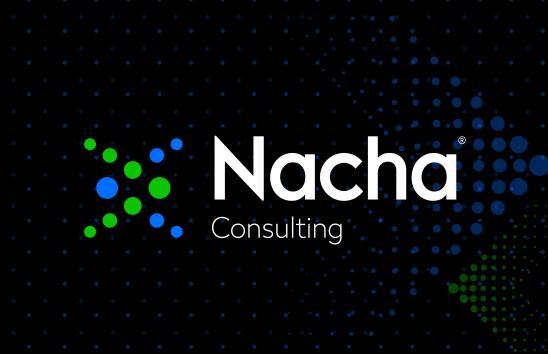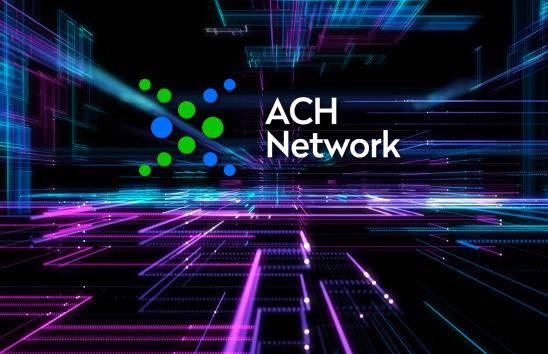ACH Operations Bulletin #4-2024-Importance of Maintaining Up-to-Date Routing Transit Numbers

Executive Summary
The ACH Network is a payment system that reaches all U.S. bank and credit union accounts. ACH payments are routed utilizing the routing transit number (“routing number” or “RTN”) of the Receiving Depository Financial Institution (RDFI). For accurate routing of ACH payments, it is important for parties involved in the origination of ACH payments to keep the routing information they use or access up to date. Using outdated routing information can result in failed payments, causing significant customer dissatisfaction and additional exceptions and expense, as well as reputational risk for organizations and financial institutions.
This ACH Operations Bulletin serves as an aid in educating financial institutions, service providers and their ACH customers on the importance of keeping and maintaining, or having access to, accurate routing number information. All parties involved in the origination of ACH payments should incorporate regular routing number updates as part of their ACH origination practices.
Background
The American Bankers Association (“ABA”) Routing Number1 was created to identify the financial institution responsible for the payment of a negotiable instrument. Although the first use of routing numbers began with checks, routing numbers now also designate participants in ACH, wire, instant and other payment systems.
The routing number of the RDFI is a crucial piece of information in an ACH payment, allowing it to be routed to the appropriate financial institution to be posted to the authorized account. Similarly, because the originating institution’s routing number is also included in an ACH transaction, the return of a payment is routed back to the sender, when appropriate.
This routing is performed by the ACH Operators, which take in ACH payment files from and distribute files to their respective financial institution customers. ACH Operators exchange participant lists of routing numbers daily to ensure interoperability, supporting the flow of ACH transactions through the ACH Network.
ABA Registrar of Routing Numbers
LexisNexis Risk Solutions (“LNRS” - formerly Accuity) is the official ABA Registrar.2 Financial institutions submit applications to LNRS to obtain new routing numbers upon charter approval, and to reinstate or retire existing routing numbers. Upon approval of the application, LNRS will take the requested action and update all necessary routing number directories.
Impacts of Out-of-Date Routing Numbers
Out-of-date routing information presents a significant risk to parties originating ACH payments, impacting the ability to collect or disburse a payment, incurring associated transaction processing costs, and affecting customer satisfaction.
Scenario with new routing number
As an example, a customer of a new financial institution may attempt to make a payment, but be rejected by the originator (e.g., a biller) because the originator system does not recognize the new, valid routing number of the payor’s institution. In this circumstance, the customer is unable to make the payment through no fault of their own, creating a negative experience. They may inquire of their financial institution as to why its routing number is being rejected for payment. When this occurs, the financial institution might contact billers, sellers, vendors, and any other parties reported to them as not accepting the routing number to validate the correctness of the routing number and request that the parties update their systems. This is an extremely time-consuming and manual process for the financial institution. If the originating party does not know how or have the capability to perform updates, then payees, payors and their respective financial institutions may all be frustrated in the attempt to complete a valid payment.
Scenario with retired routing number
Outdated routing information may also result in an originator accepting from a customer or continuing to use a retired routing number. In this case, the payment may fail prior to being sent into the ACH Network or may be rejected by an ACH Operator. This again creates frustration and additional work and cost for the party attempting to collect or send a payment.
As there are several hundred additions and deletions of routing numbers per year, parties taking and servicing payments should frequently update their routing information to ensure a smooth and successful experience and maximize the efficiency inherent in the ACH Network.
Nacha Operating Rule Requirements
The Originating Depository Financial Institution (ODFI), the financial institution that submits the transaction into the ACH Network, warrants the correctness of the data in an Entry,3 which is inclusive of the RDFI’s routing number. However, circumstances created by outdated routing information generally result in a transaction never being received by an RDFI. Either the transaction is never created (i.e., rejected by the Originator) or it is rejected by the ODFI or ACH Operator in the course of processing.
Consumer ACH debits authorized via the telephone or an online channel (TEL4 and WEB5 payments, respectively) have specific rules requiring routing number validation. These rules require an Originator to establish and implement commercially reasonable procedures to verify that the routing number used in the ACH debit is valid. Originators of TEL and WEB debit entries must have a commercially reasonable procedures in place, or ensure that vendor software updates are in place, to update information for routing number validation. It is not commercially reasonable to do nothing to comply with these requirements of the Rules. Parties found to be non-compliant with the Nacha Rules can be sanctioned under Nacha’s rules enforcement system.
Available Solutions
To assist originating parties and financial institutions, the descriptions below provide considerations for obtaining updated routing number information.
LexisNexis® Bankers Almanac® Routing Transit (RTN) File
As the routing number registrar, LNRS6 is the official source of routing number information in the United States. LNRS offers its LexisNexis® Bankers Almanac® Routing Transit (RTN) File7 to all participants in the ACH Network. This file contains current routing information, including banking details such as mergers and routing number changes, updated in real-time for more than 10,000 financial entities in the U.S. According to LNRS, this file is available to participants for daily or monthly delivery.
Federal Reserve Banks’ E-Payments Routing Directory
The Federal Reserve Banks’ E-Payments Routing Directory8 is updated daily based upon information received from LNRS. The E-Payments Routing Directory has an online user interface to allow for individual routing number lookups; however, the entire table is available for download only to FedLine® customers. Financial institutions are permitted to grant access to the download to their customers in certain circumstances9 to facilitate processing and settling of payment transactions.
Other Considerations
Users of certain software or services may have routing number verification provided to them; these parties should consult with their software or service providers to ensure that timely updates are being performed.
Action to be Taken
All parties involved in originating ACH transactions should keep routing number information up-to-date in order to ensure a quality experience when originating ACH payments, comply with validation requirements of the Nacha Operating Rules and minimize exceptions and associated costs. Originating parties include ODFIs, Originators (parties who initiate credit or debit ACH payments) and Third-Party Service Providers (software/service vendors) including Third-Party Senders (intermediary parties that transmit ACH payments). Third-Party Service Providers also include vendors who host payment pages for Originators.
Similarly, account validation vendors should be using current routing information to perform commercially reasonable account validation on behalf of originating parties. Parties using an account validation vendor also may consider performing an initial routing number validity check prior to transmission of data to the vendor to capture errors as early as possible and to reduce costs.
When determining the frequency of routing number updates needed to keep pace with changes, participants should consider that routing number changes may happen multiple times per week. Daily updates may be preferable for frequent or larger-volume Originators or Third-Party Service Providers.
To ensure this important education reaches all necessary participants, financial institutions and service providers are encouraged to share this information with customers involved in ACH origination.
###
1 https://www.aba.com/about-us/routing-number
2 https://risk.lexisnexis.com/insights-resources/article/official-aba-registrar
3 See Nacha Operating Rules, Article 2, Subsection 2.4.1.4 The Entry Contains Required Information
4 See Nacha Operating Rules, Article 2, Subsection 2.5.15.5 Verification of Receiver’s Routing Number
5 See Nacha Operating Rules, Article 2, Subsection 2.5.17.6 Verification of Receiver’s Routing Number
6 LexisNexis Risk Solutions is a Nacha Preferred Partner for Official Registrar of Routing Numbers https://www.nacha.org/content/LNRS
7 https://risk.lexisnexis.com/products/routing-transit-number-file
8 https://www.frbservices.org/resources/routing-number-directory
9See Federal Reserve Banks Operating Circular 5, Appendix B: https://www.frbservices.org/binaries/content/assets/crsocms/resources/rules-regulations/102824-operating-circular-5.pdf







